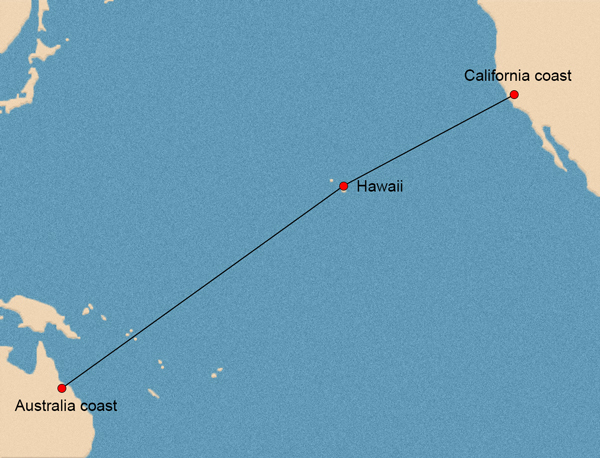Sign In
Estimation and Percent of a Number







| | 9 Theory slides |
| | 11 Exercises - Grade E - A |
| | Each lesson is meant to take 1-2 classroom sessions |
Catch-Up and Review
Here are a few recommended readings before getting started with this lesson.
Connection Between Percents and Numbers
Take a look at a container with a total capacity of 60 liters. Move the slider to fill it with a liquid. See how the number of liters of the liquid relates to the percent of the occupied container.

How to Find a Percent of a Number?
Finding the Percent of a Number
ofis often used to indicate a product in math expressions. This means that 52 of 86 is the same as the product of 52 and 86.
Extra
Alternative Method
Counting Fish in a Pond

Hint
Solution
ca⋅b=ca⋅b
ba=b/50a/50
Multiply
1a=a
ofindicates multiplication.
ca⋅b=ca⋅b
ba=b/25a/25
Multiply
1a=a
Comparing Fish Sizes

Hint
Solution
ofindicates multiplication.
a%=100a
ba=b/20a/20
Calculate quotient
ca⋅b=ca⋅b
ba=b/5a/5
Multiply
1a=a
a%=100a
ba=b/20a/20
Calculate quotient
Estimating the Percent of a Number
Traveling Across the Pacific Ocean

Solution
ofoften indicates multiplication.
a%=100a
ba=b/20a/20
Calculate quotient
ca⋅b=ca⋅b
ba=b/5a/5
Multiply
1a=a
ca⋅b=ca⋅b
ba=b/2a/2
Multiply
Calculate quotient
Finding Percents of Numbers
A Secret for Faster Calculations

a%=100a
ba=b/2a/2
ca⋅b=ca⋅b
Cross out common factors
Simplify quotient
1a=a
| Number | Percent | Fraction |
|---|---|---|
| 10 | 10% | 101 |
| 20 | 20% | 51 |
| 25 | 25% | 41 |
| 50 | 50% | 21 |
| 75 | 75% | 43 |
Consider the diagram showing how much time Zosia spent on different activities during a typical day.

We want to find about how many more hours Zosia spent sleeping than doing homework. Zosia spent 33 % of her day sleeping and 13 % of her day doing homework according to the diagram. Let's start by calculating the difference between these percents. 33 % - 13 % = 20 % This means that we need to find 20 % of 24 hours. We can do this by multiplying 20 % by 24 hours. 20 %of 24h = 20 %* 24h Let's rewrite the percent as a decimal number by dividing it by 100. To do so, we will move the decimal point two places to the left.
Next, multiply 0.2 by 24 to evaluate 20 % of 24 hours. 0.2* 24=4.8 We found that Zosia spent 4.8 hours more sleeping than doing homework.
Dominika wants to buy a purse regularly priced at $52. It is on sale for 20% off. Dominika estimates that she will save 51 of $50 or $10.

Let's start by writing 20 % as a fraction. To write a percent as a fraction, we write the number part as a numerator over 100. 20 % = 20/100 Let's simplify this fraction by dividing the numerator and the denominator by 20.
We found that Dominika will save 15 of $ 52. She estimates that she will save 15 of $ 50. This means that she rounded $ 52 to $ 50. Since 52 is greater than 50, we conclude that 15 of $ 52 is greater than 15 of 50. 52 > 50 ⇔ 1/5 * 52 > 1/5* 50 Therefore, the actual amount of saved money is greater than the amount Dominika estimated.
The SkyRise Airline records snack orders made by their passengers. Last year, 28% of passengers ordered a sandwich and a soda. Today, there are 396 passengers on the flight to Seattle, Washington.

We need to estimate 28 % of 396 to find the approximate number of passengers who will order a sandwich and a soda on the flight to Seattle. Let's start by rounding both numbers. c|c 28is closer to30 & 396is closer to400 than to20 & than to350 ⇓ & ⇓ 28 % ≈ 30 % & 396≈ 400 Now, we calculate 30 % of 400. We can do this by multiplying 30 % by 400. Let's also rewrite the percent as a fraction.
We found that 28 % of 396 is about 120. This means that the airline can expect about 120 passengers on the flight to Seattle to order a sandwich and a soda. Note that 396 can also be rounded to 395, which results in a different estimate 118.5. 30 % of 395=118.5 Since this number represents the number of people, it should be an integer. Let's round 118.5 to 119. That means 119 is another estimate of the number of passengers on the flight to Seattle who will order a sandwich and a soda.
Kevin is getting ready for a snowboard race that has three rounds. After the first round, 25% of the participants with the best results will compete in the second round. Then, 15% of the fastest snowboarders will compete in the final third round.

We know that 528 snowboarders take part in the first round of the competition. Only 25 % best snowboarders will compete in the second round. Let's find the number of competitors in the second round by calculating 25 % of 528. 25 % &of 528 &⇕ 25 % &* 528 We can start by rewriting the percent as a fraction and simplifying it as much as possible.
We found that 132 snowboarders will compete in the second round. We also know that 15 % of the snowboarders with the best results will move on to the third round. Let's find how many people this is by calculating 15 % of 132. This time, we can rewrite the percent as a decimal number by dividing it by 100.
We get that 15 % is equivalent to 0.15. Next, multiply the decimal number 0.15 by 132. 0.15* 132=19.8 The product is 19.8, which we round to 20. Therefore, about 20 competitors will take part in the final third round of the competition.

